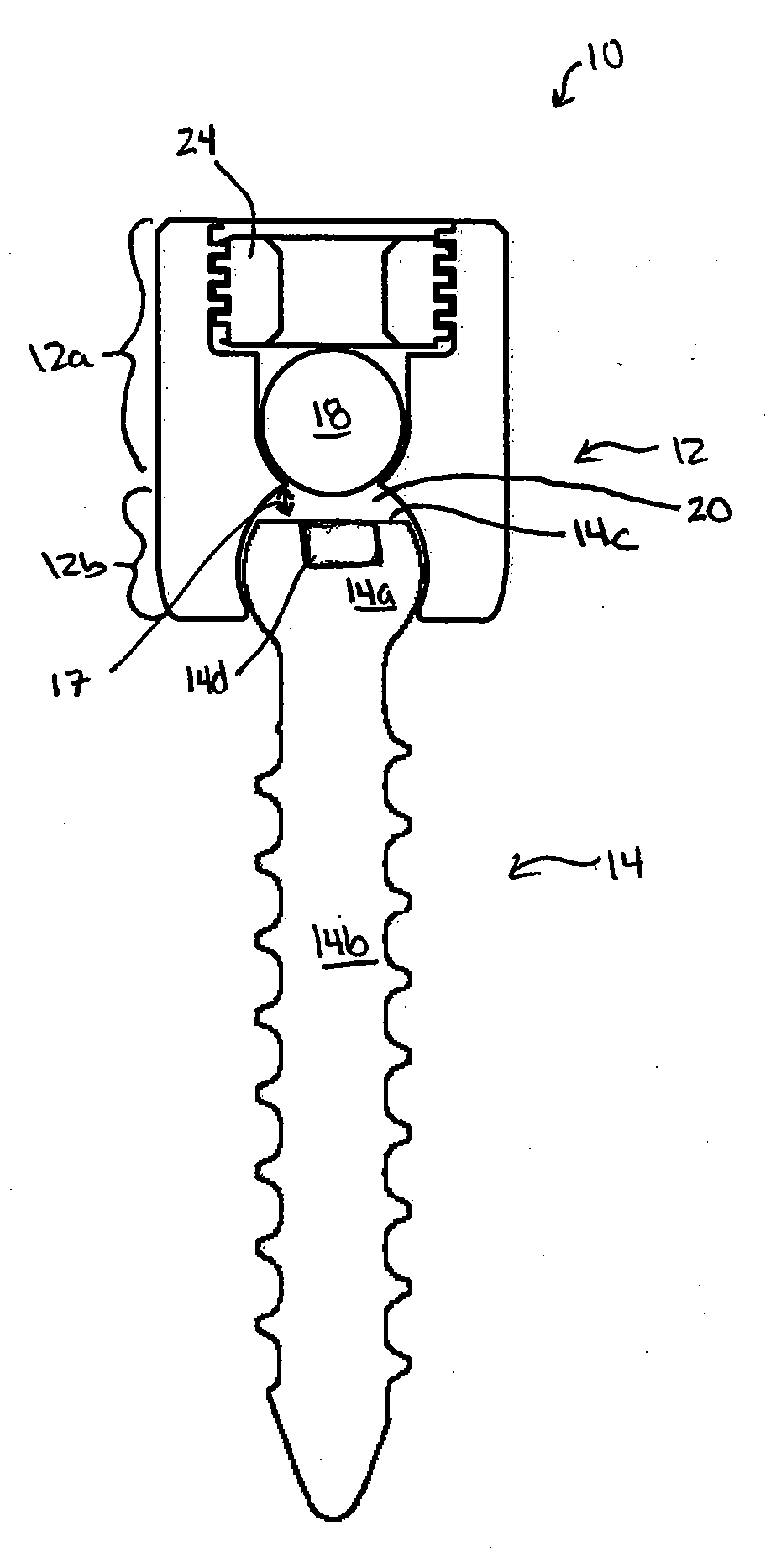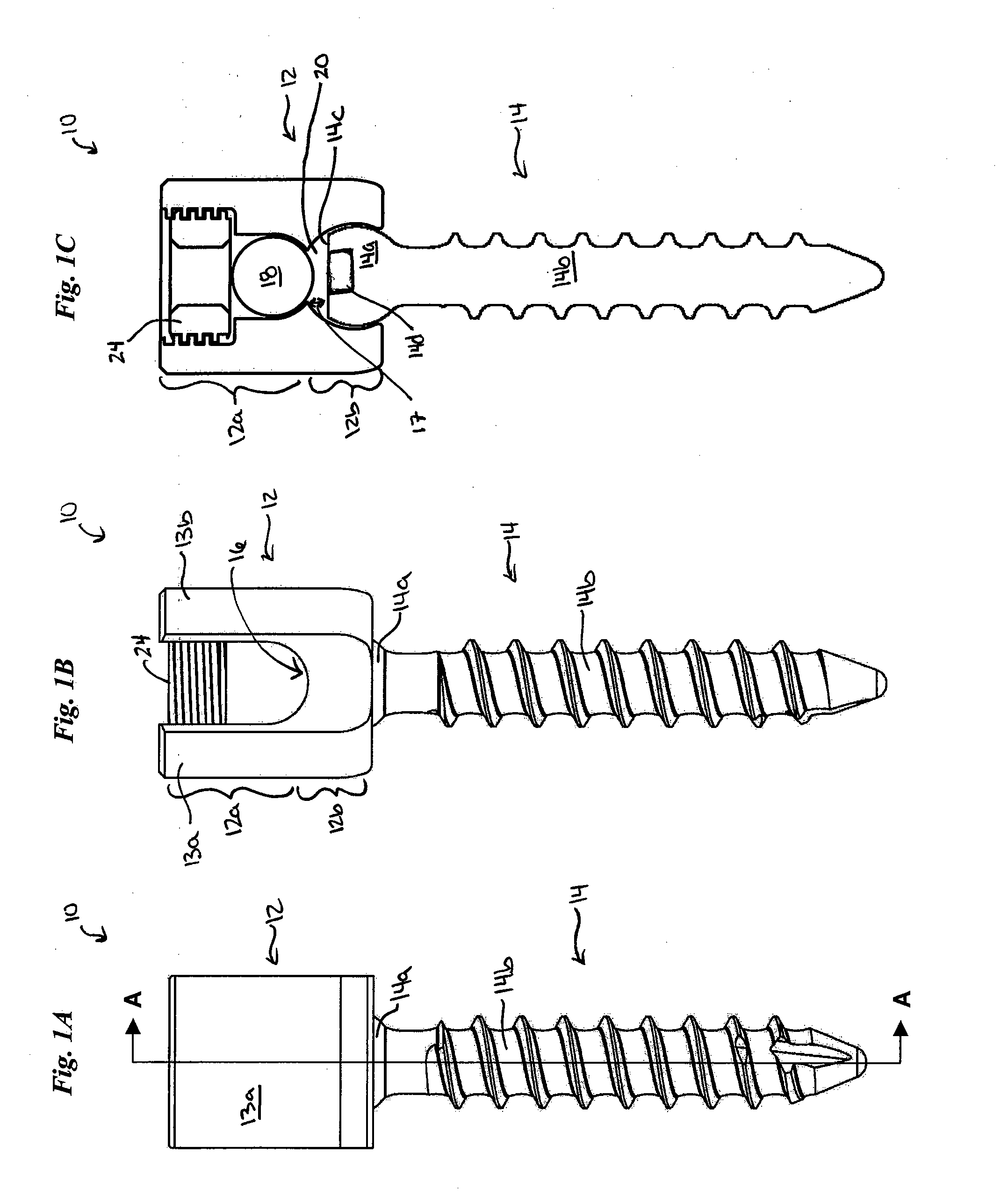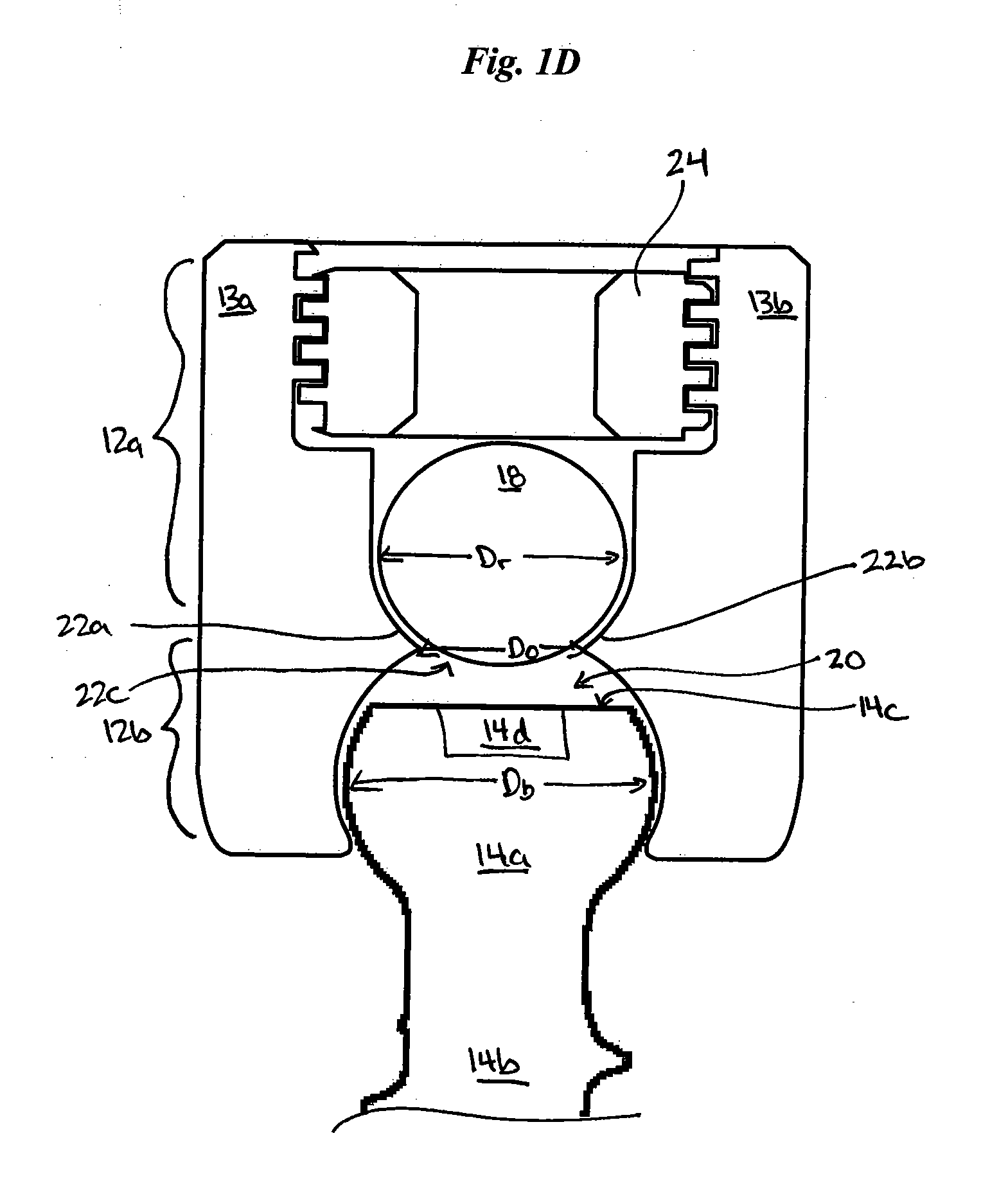Anchoring systems and methods for correcting spinal deformities
a spinal deformity and anchoring technology, applied in the field of spinal deformity correction, can solve the problems of severe restriction, cumbersomeness, immobility of patients,
- Summary
- Abstract
- Description
- Claims
- Application Information
AI Technical Summary
Benefits of technology
Problems solved by technology
Method used
Image
Examples
Embodiment Construction
[0019] The present invention generally provides spinal anchoring methods and devices that are effective to correct spinal deformities while allowing some flexibility to the spine. In particular, the methods and devices allow a spinal fixation element to mate to several adjacent vertebrae to maintain the vertebrae at a fixed distance relative to one another, yet to allow the orientation of each vertebrae in that fixed position to adjust as the orientation of the patient's spine changes, e.g., due to movement and / or growth. While various techniques can be used to provide for such a configuration, an exemplary anchoring device in accordance with one embodiment of the present invention generally includes a bone-engaging member that is adapted to be implanted in a vertebra, and a receiver member that is movably coupled to the bone-engaging member and that is effective to mate to a spinal fixation element. In use, when several anchoring devices are implanted within adjacent vertebrae in a...
PUM
| Property | Measurement | Unit |
|---|---|---|
| Flexibility | aaaaa | aaaaa |
| Distance | aaaaa | aaaaa |
| Bioabsorbable | aaaaa | aaaaa |
Abstract
Description
Claims
Application Information
 Login to View More
Login to View More - R&D
- Intellectual Property
- Life Sciences
- Materials
- Tech Scout
- Unparalleled Data Quality
- Higher Quality Content
- 60% Fewer Hallucinations
Browse by: Latest US Patents, China's latest patents, Technical Efficacy Thesaurus, Application Domain, Technology Topic, Popular Technical Reports.
© 2025 PatSnap. All rights reserved.Legal|Privacy policy|Modern Slavery Act Transparency Statement|Sitemap|About US| Contact US: help@patsnap.com



